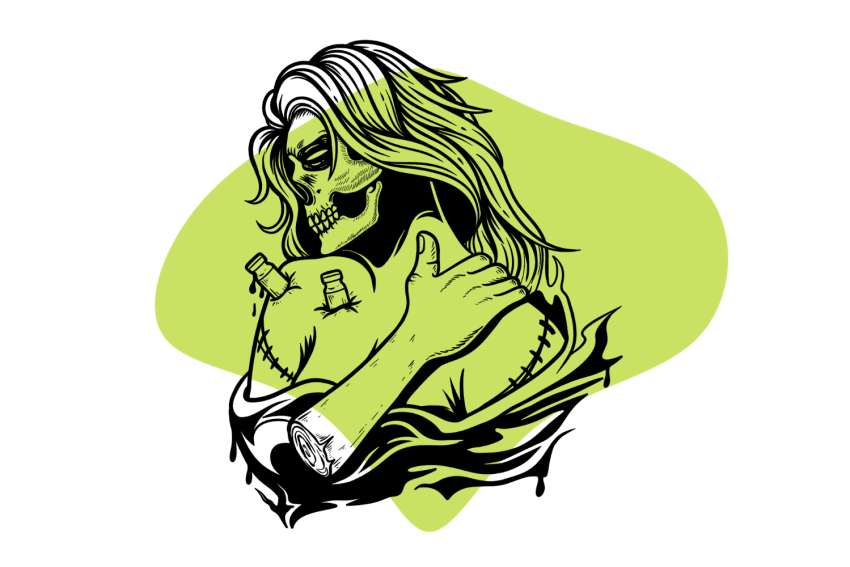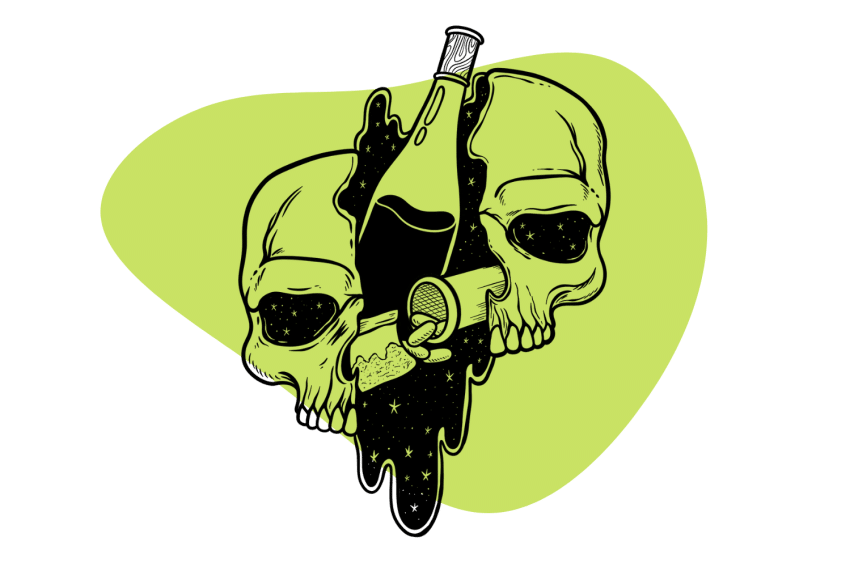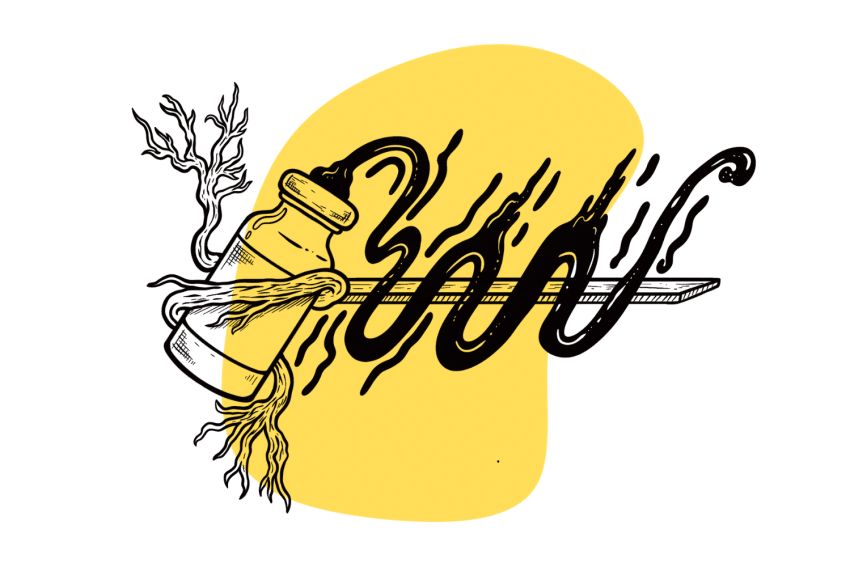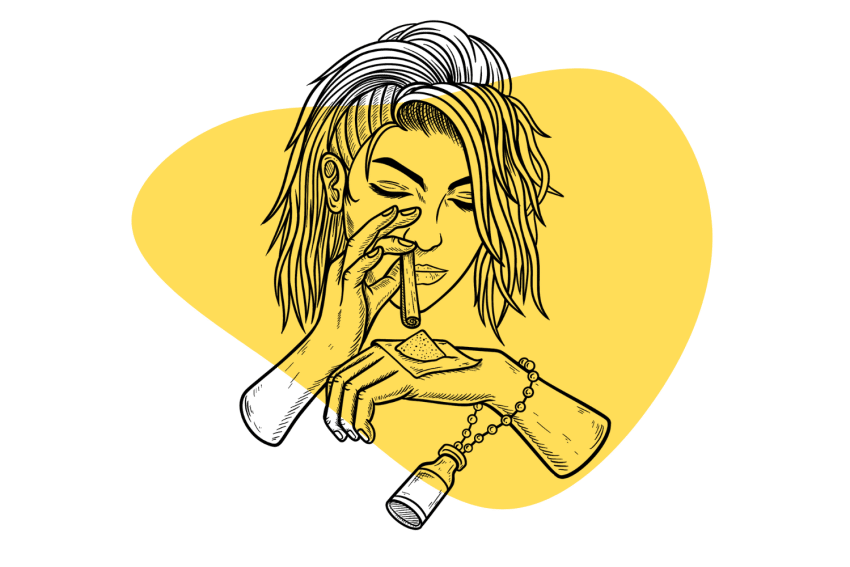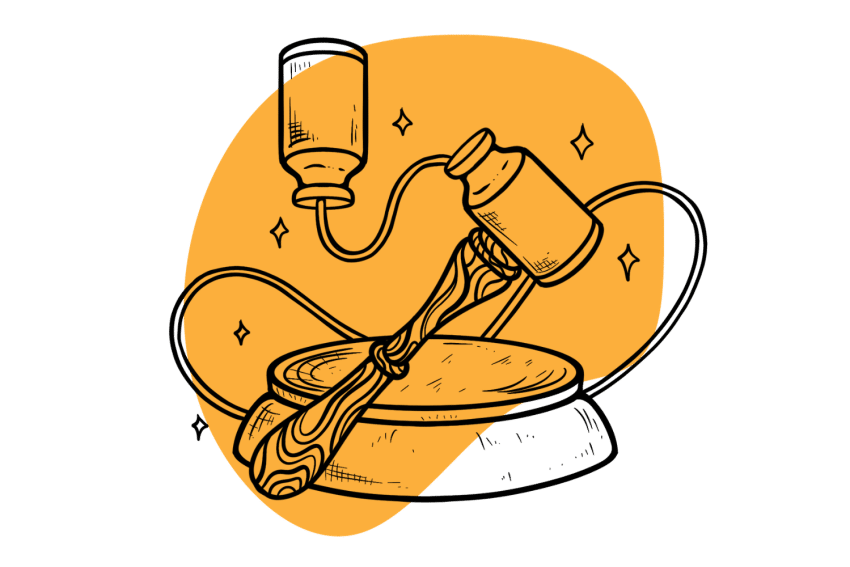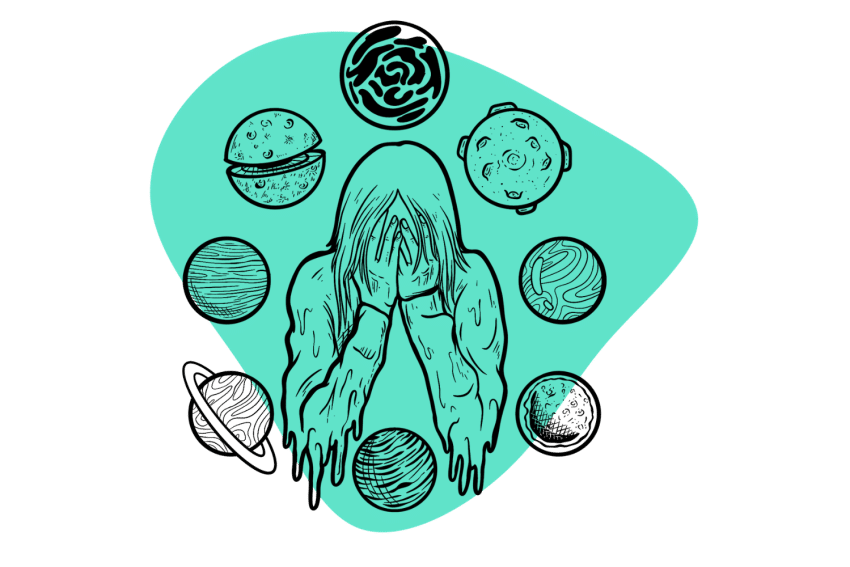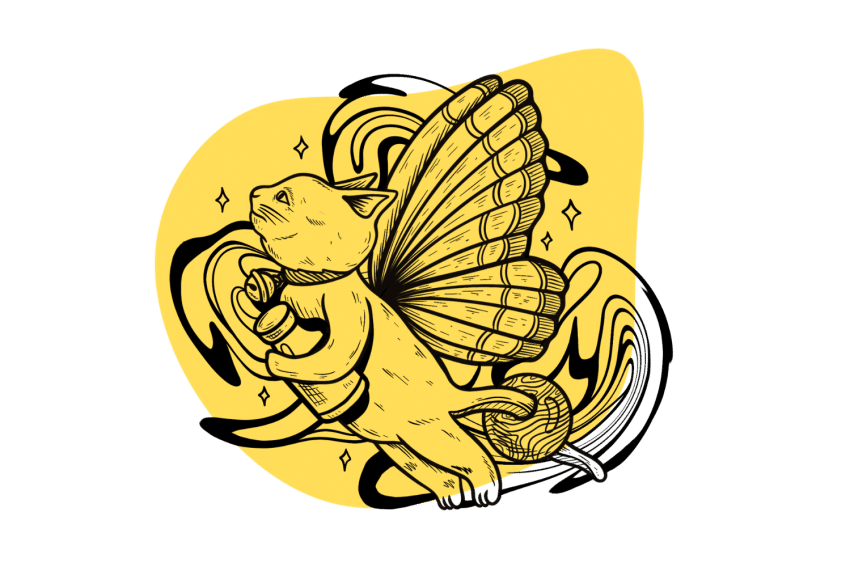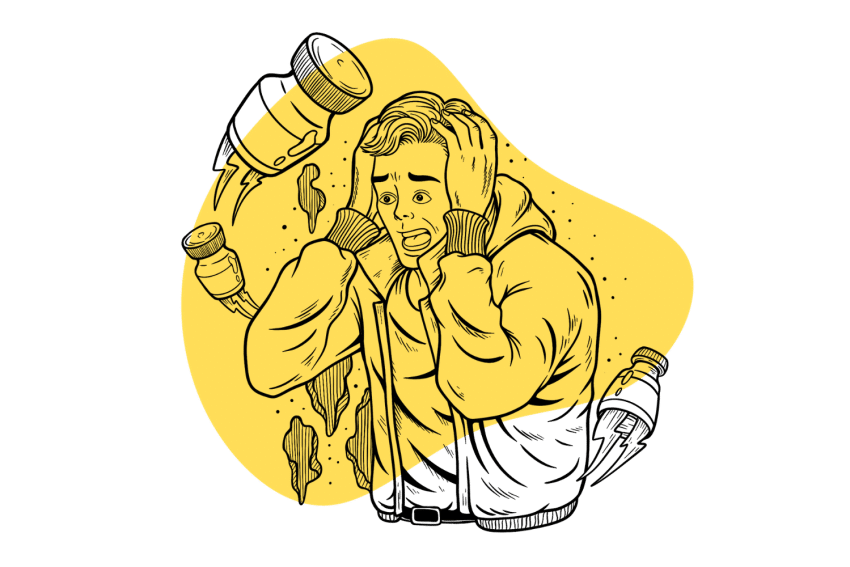Is Ketamine Psychedelic?
Ketamine is undeniably trippy — but what does it take for something to be truly psychedelic?
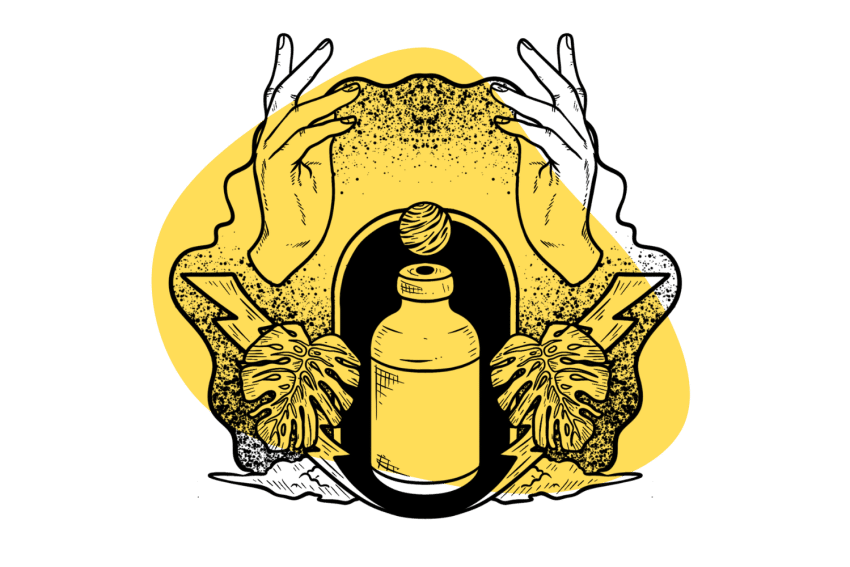
Ketamine has been considered a dissociative anesthetic for most of its 60-year existence. No more than a decade ago, very few people would have considered it “psychedelic,” but the latest psychedelic “renaissance” has other plans.
The issue here is language more than it is the substance itself.
Drugs like magic mushrooms, LSD (lysergic acid diethylamide), mescaline, and DMT (dimethyltryptamine) are typically referred to as “classical psychedelics.” Nobody is arguing whether or not these substances are psychedelic, as they all target the same serotonergic receptors to produce trippy visuals and deep introspective thought patterns.
Many exclude compounds like MDMA, cannabis, or ketamine from the “psychedelic” umbrella.
Now, ketamine clinics around the country are marketing ketamine as an important part of “psychedelic therapy.”
A lot of new research on ketamine also involves psychedelic language — like this paper from 2019, which clarifies that “Although ketamine does not appear to primarily target the serotonergic system, it is nonetheless capable of inducing psychedelic states.”
So what, exactly, makes something psychedelic? And where does ketamine fit?
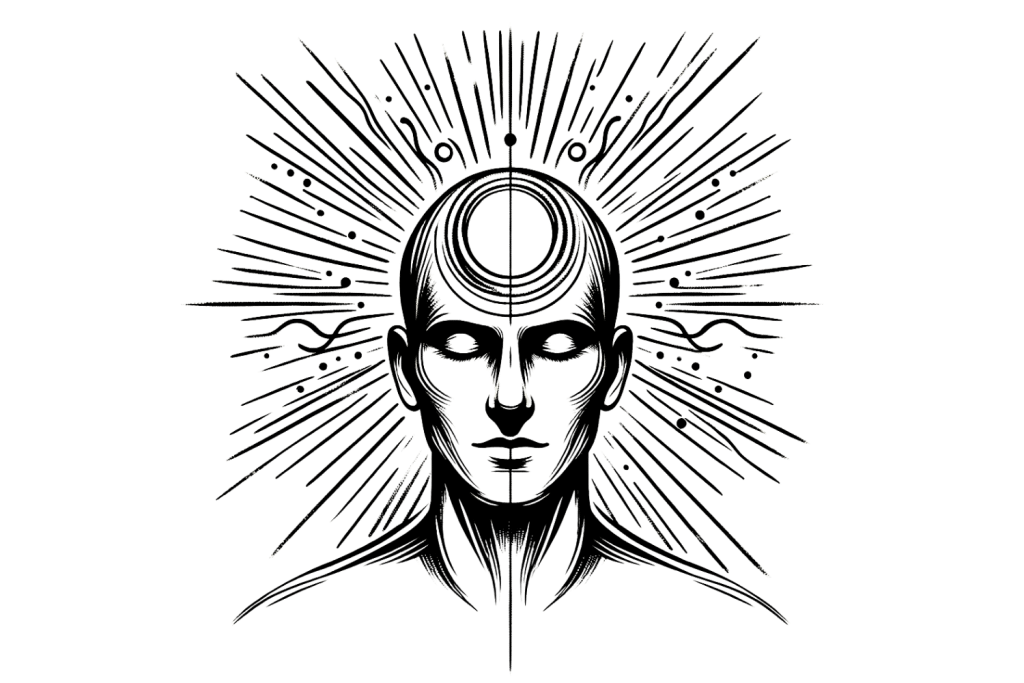
This article was expanded upon from one of our recent newsletter posts. To receive more posts like this every week, consider subscribing to the Tripsitter newsletter using the form below.
Psyche + Delic = “Mind Revealing”
Psychiatrist Humphry Osmund first coined the term in a letter to author Aldous Huxley in the 1950s. Psychedelic combines two Greek words — “psyche,” which means mind, and “delos,” meaning reveal.
Other terms for psychedelics have been used over the years. Early attempts to define the experience of the drugs compared the effects with psychosis, calling the drugs psychotomimetic, meaning “psychosis mimicking.“
In 1979, a group of researchers, including Carl Ruck, Jeremy Bigwood, Danny Staples, Jonathan Ott, and Gordon Wasson, coined the term “entheogen.” This term is also a combination of two Greek words — “entheos,” meaning “full of god,” and “genésthai,” meaning “to come into being.”
However, neither term became as widely accepted as psychedelics. “Hallucinogen” is popular but has negative associations and is avoided by modern enthusiasts.
Even with so much language to choose from, it’s notoriously tricky to stuff the psychedelic experience into a neat little box.
As ethnobotanist and psychedelic philosopher Terence McKenna put it, “You can’t english it.” Nonetheless, we keep trying.
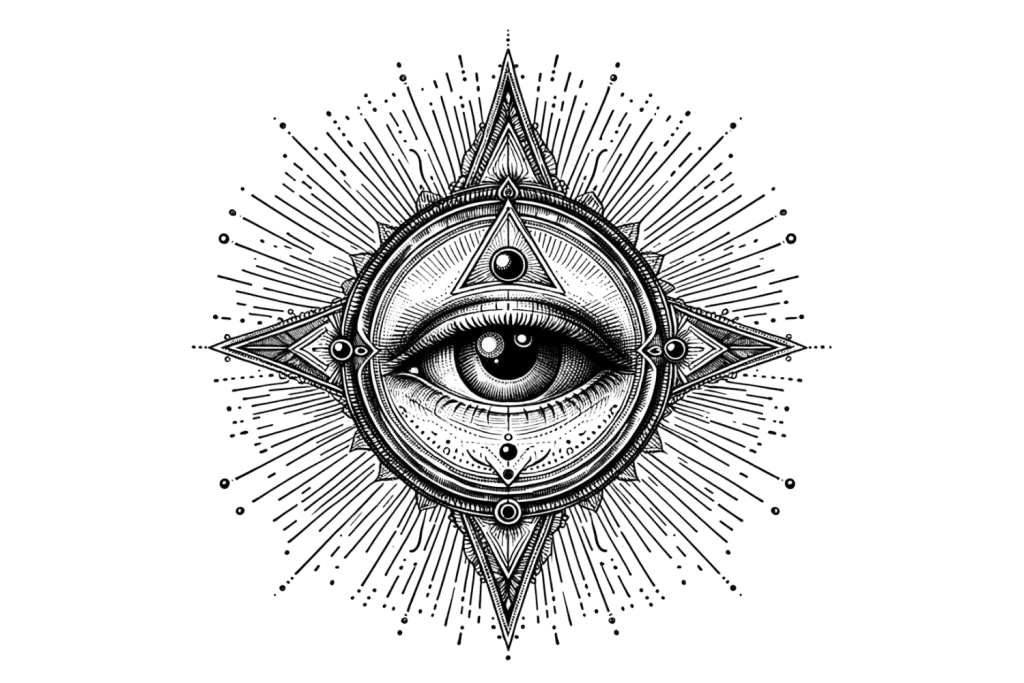
Defining Psychedelics
There isn’t a consensus on what psychedelics are in academic circles.
The topic of whether or not ketamine is psychedelic has been a spicey debate on psychedelic Twitter (X, whatever). Many hold that ketamine’s impact on the NMDA receptors and lack of serotonergic action limit the drug to the category of dissociative anesthetic — while others consider the deep introspective and trippy states it produces to qualify the drug as a full-blown psychedelic.
This is an argument over chemistry/pharmacology versus subjective experience as the defining factor for the classification of a drug as psychedelic.
In an interview with Benzinga, Dr. Racehl Yehda, a Professor of Psychiatry and Neuroscience of Trauma at Mt. Sinua University in New York, spoke in favor of using neurochemistry to define psychedelics.
A boilerplate explanation of “classical psychedelics” are compounds eliciting effects through activation of the 5-HT2A serotonin receptors in the body. Research conducted by Franz Vollenweider has shown that by blocking this receptor, psychedelic drugs no longer work. Drugs such as DMT, LSD, psilocybin, mescaline, and even MDMA all work this way.
A recent paper by prominent pharmacologist and medical chemist David Nichols in Psychedelic Medicine also supports this view. Nichols has also previously suggested distinctions within psychedelics by defining two structural types — indoleamines and phenylalkylamines, which we won’t get into here.
However, computational neurobiologist, pharmacologist, and chemist Dr. Andrew Gallimore points out in his newsletter Alien Insect On Drugs that the definition excludes drugs like Salvia divinorum, a wildly potent plant with effects few would debate are psychedelic. Salvia is unique in that it works almost exclusively through the kappa-opioid receptors.
There are also drugs like diphenhydramine (DPH) and other antihistamines, datura, brugmansia, and mandrake that produce powerful hallucinations. None of these drugs have any particular affinity for the 5HT2A receptors.
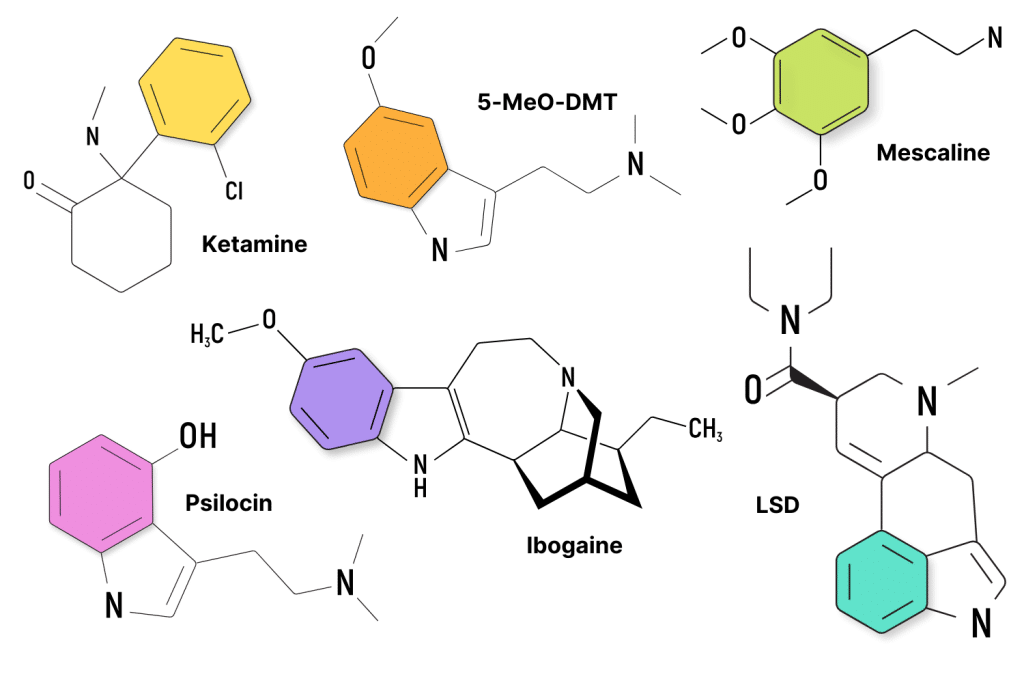
How Does Ketamine Work?
Ketamine primarily works by binding to the NMDA receptors. These receptors are involved in a wide range of neurological functions, including consciousness, memory, and imagination.
Blocking these receptors slows down brain activity and puts users in a state of dissociation and anesthesia. Here, the user remains conscious but completely detached from their body. On the outside, it looks like the user is asleep, but inside, they continue to exist in a different space, often far outside the normalcy of what we consider waking consciousness.
While in this dissociated state, users experience profound and ineffable visuals and experiences — such as being “outside of time itself.” Some users experience a strange sensation of watching themselves from somewhere else in the room or teleporting to new dimensions.
Newer research has discovered a powerful antidepressant after taking ketamine. This effect lasts anywhere from a few days to 2-weeks.
Some attribute this effect to ketamine’s ability to induce a state of dissociated “euphoric nothingness.” Within this state, the user is able to take a glimpse at their psyche and its unconscious toxic or self-deprecating patterns. The lack of emotion during this experience helps users confront uncomfortable parts of themselves that can then be integrated later for more long-lasting change.
If this isn’t considered “mind-revealing,” I’m not sure what it is.
As weird and trippy as the ketamine experience is, it has little to no direct impact on the 5HT2A receptors and, therefore, doesn’t make it into the exclusive “classical psychedelic” group based on neurochemical definitions.
Salvia: Another Psychedelic Outlier
The discussion of Salvia divinorum (diviner’s sage) is relevant for the discussion of what makes something psychedelic or not as well.
Many consider salvia one of the most powerful psychedelics in existence. It’s known for creating extremely potent and immersive experiences comparable to DMT.
However, like ketamine, salvia has almost no direct impact on the 5HT2A receptors. Instead, its psychoactive effects rely on the kappa-opioid receptors.
Kappa opioid receptors aren’t the same receptors opioids like morphine bind to; instead, they modulate dopamine in the brain, among other things.
Ketamine also interacts with kappa opioid receptors, but it’s unclear how much of this mechanism is responsible for ketamine’s unique psychedelic effects. In fact, it’s not even clear how these receptors facilitate the psychedelic experience of salvia.
This is all beside the point. The bottom line here, as Andrew Galimore points out in his critique, is that using serotonin receptors as a guidepost doesn’t capture the whole picture.

Using Questionnaires to Define Psychedelic Effects
Gallimore points to questionaries researchers currently use to evaluate whether or not something is psychedelic. He argues the Mystical Experience Questionnaire (MEQ) or Abnormal Mental States Questionnaire (APZ) already hold keys to evaluating psychedelic effects rather than neurochemistry.
These scales are usually self-reported and examine the personal, subjective experience of those under the influence of psychedelics. This line of thinking leads to another way to examine psychedelics — by their subjective effects.
A wide variety of questionnaires attempt to break down the psychedelic experience into parameters and metrics to compare how altered someone’s state was or perhaps measure a specific part of the experience, like how mystical it was.
These surveys ask questions like:
- Experience of Unity: “I experienced past, present, and future as oneness.”
- Blissful State: “I enjoyed boundless pleasure.”
- Anxiety: “I felt threatened.”
Each question has a number value assigned to it, and the ensuing calculations assign a value to the experience, allowing researchers to compare drugs and experiences and study various factors involved in psychedelic research.
Some questionnaires were built by attempting to map the psychedelic experience. Psychedelic research pioneers like Stan Groff used systems like this.
This approach to studying psychedelics, along with studying their downstream effects, like antidepressant or anxiolytic actions, shows ketamine does have similar effects to serotonergic psychedelics like psilocybin and LSD.
Consciousness is clearly altered, along with mood, emotions, and sense of self. Psilocybin will score higher than ketamine on some questionnaires, and while it’s not technically a measure of “how psychedelic” something is, it would seem that ketamine and psilocybin can be confirmed to alter consciousness.
All this is to say we do have some tools for examining and talking about psychedelic effects beyond what receptor they bind to. Ketamine clearly ranks on these scales (so do salvia and cannabis) despite having different mechanisms of action from more “classical” compounds like LSD, psilocybin, or DMT.
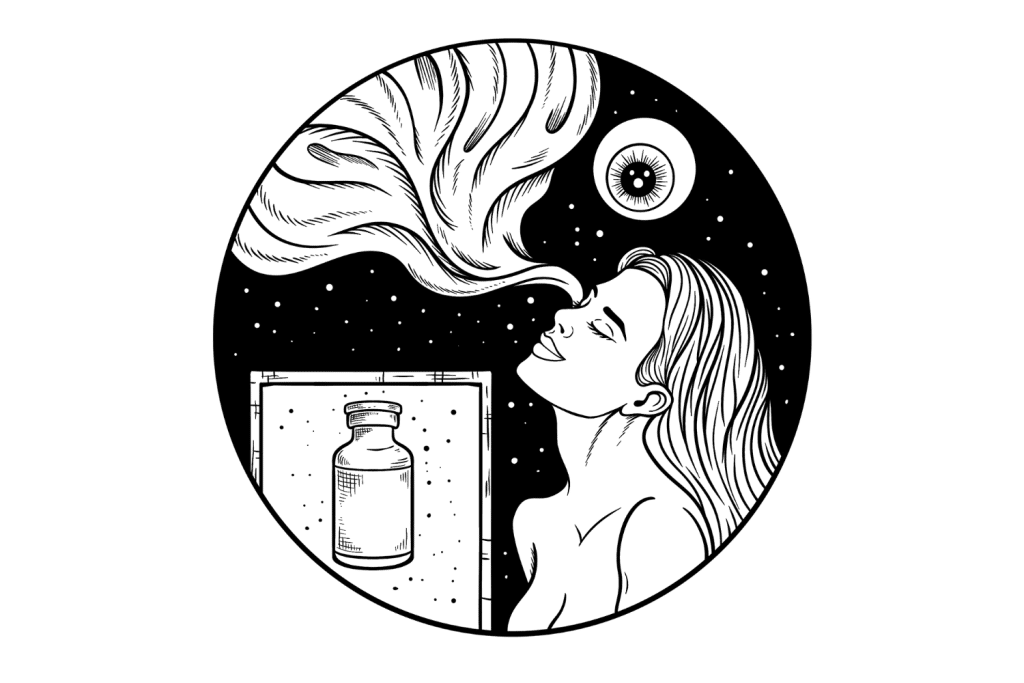
Psychedelics & Neural Imaging
Another method to find patterns in the effects of psychedelics is brain imaging. Using brain scans like fMRI (functional magnetic resonance imaging) or EEG (electroencephalogram) to see what happens inside the brain while on psychedelics can make “maps” of the experience. It’s another set of data that can offer insight into similarities and differences between different altered states.
For example, one study examined what the brain did on LSD, nitrous oxide, and ketamine. Results showed similar connections inside specific brain networks and throughout the brain. The authors noted this was particularly interesting as all the mechanisms of action of the drugs, along with the methods of consumption, were unique.
Gallimore suggests including both phenomenological data and brain data to define psychedelics.
He advocates for using the “neural signature” of psychoactive drugs to categorize them. He says common markers for psychedelic experience are the distribution of major functional networks like the default mode network (DMN), increased connections between networks, a loss of network integrity, and communication between disparate areas of the cortex.
If one views ketamine from this angle, it does match up nicely with other psychedelics.
Bottom Line: Is Ketamine a Psychedelic?
The short answer is it depends on your definition of “psychedelic.” There’s no universally accepted distinction between different psychedelic drugs, and there are many more opinions than outlined in this article.
As humans, we’re constantly trying to fit things into boxes so we can make sense of the world around us — but, as is often the case, there are outliers that don’t neatly fit into the tidy definitions we make.
In short, there are two arguments we can see here:
- Subjective Effect-Based — If you believe a true psychedelic is anything that “reveals the mind” through altered states of consciousness — then yes, ketamine is undeniably psychedelic. But where does this leave drugs like alcohol?
- Neurochemistry/Pharmacology-Based — If you believe psychedelics require some degree of interaction with the 5HT2A receptors the way DMT, LSD, or psilocybin do — then no, ketamine doesn’t fit this description of psychedelic. But what about drugs like salvia?
What do you think? Is ketamine psychedelic or something else entirely?
Subscribe to Tripsitter: Newsletter & Podcast
Unlock Your Mind: Subscribe for Expert Insights on Psychedelics 🍄🌵
References
- Carl A. P. Ruck, Jeremy Bigwood, Danny Staples, Jonathan Ott & R. Gordon Wasson (1979). Entheogens. Journal of Psychedelic Drugs, 11:1-2, 145-146
- Vollenweider, F. X., Vollenweider-Scherpenhuyzen, M. F., Bäbler, A., Vogel, H., & Hell, D. (1998). Psilocybin induces schizophrenia-like psychosis in humans via a serotonin-2 agonist action. Neuroreport, 9(17), 3897-3902.
- Nichols, D. E., Nichols, C. D., & Hendricks, P. S. (2023). Proposed consensus statement on defining psychedelic drugs. Psychedelic Medicine, 1(1), 12-13.
- Nichols, D. E. (2012). Structure–activity relationships of serotonin 5‐HT2A agonists. Wiley Interdisciplinary Reviews: Membrane Transport and Signaling, 1(5), 559-579.
- Lii, T. R., Smith, A. E., Flohr, J. R., Okada, R. L., Nyongesa, C. A., Cianfichi, L. J., … & Heifets, B. D. (2023). Randomized Trial of Ketamine Masked by Surgical Anesthesia in Depressed Patients. medRxiv, 2023-04.
- Jacobson, M. L., Simmons, S. C., Wulf, H. A., Cheng, H., Feng, Y. H., Nugent, F. S., … & Lucki, I. (2020). Protracted effects of ketamine require immediate kappa opioid receptor activation and long‐lasting desensitization. The FASEB Journal, 34(S1), 1-1.
- Dai, R., Larkin, T. E., Huang, Z., Tarnal, V., Picton, P., Vlisides, P. E., … & Mashour, G. A. (2023). Classical and non-classical psychedelic drugs induce common network changes in human cortex. NeuroImage, 273, 120097.

